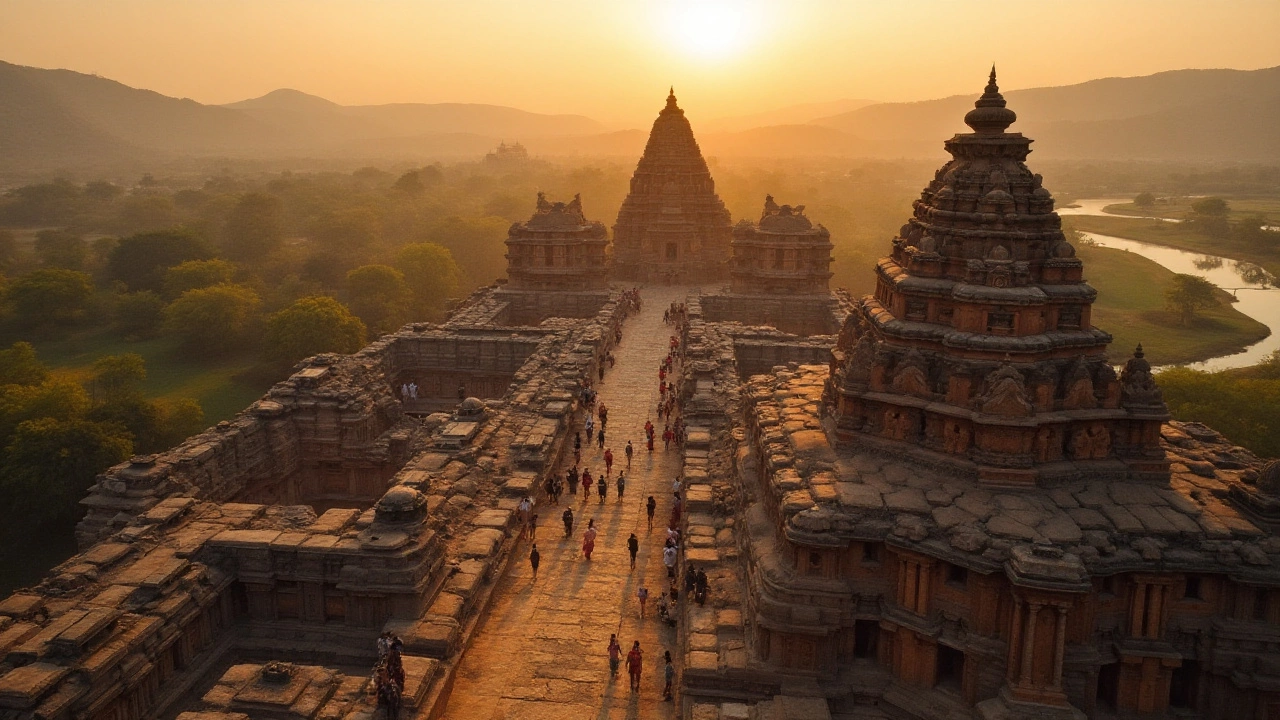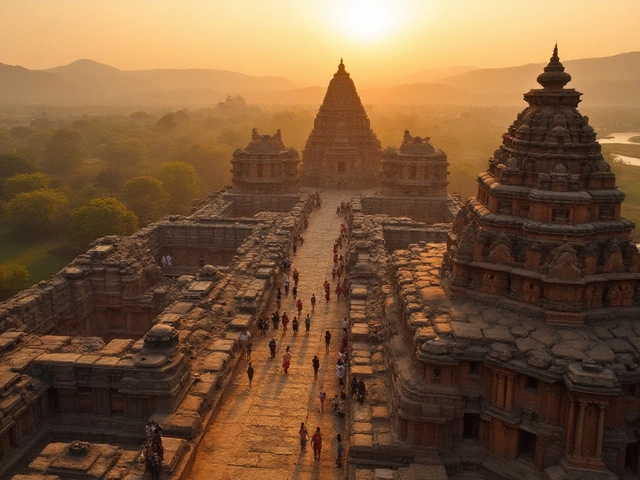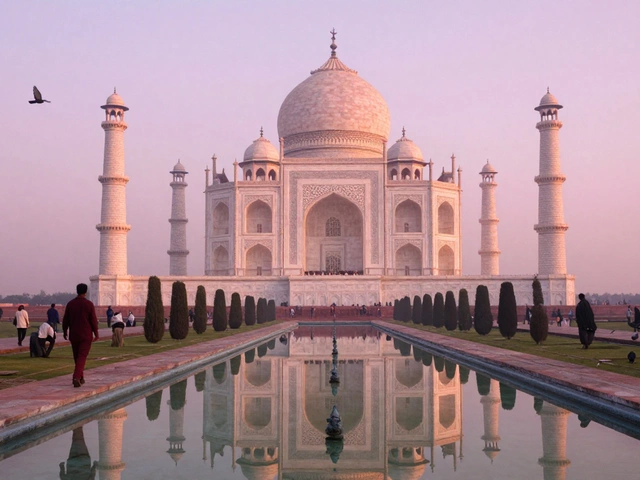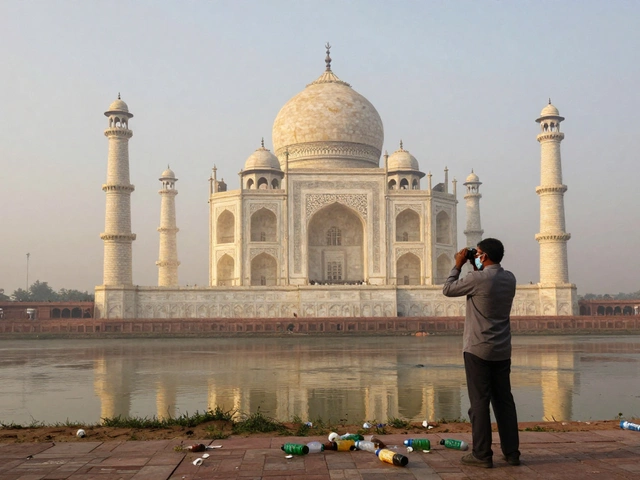India is home to a treasure trove of ancient wonders that have stood the test of time. Its heritage sites whisper tales of a bygone era, carrying the legacy of a land steeped in cultural and historical richness. Each site, whether it's an age-old temple or an ancient university, acts as a testament to the extraordinary craftsmanship and innovative spirit of past civilizations.
For centuries, travelers and historians alike have been fascinated by India's ability to preserve such an extensive array of historical gems. As one embarks on this journey, it becomes evident that these sites are not merely relics of stone and brick, but living narratives of human endeavor, spirituality, and creativity. Join us as we walk through the corridors of time to uncover the unique stories and significances of these ancient heritage sites in India.
- An Introduction to India's Heritage
- The Splendor of Ancient Sites
- Stories Behind the Ruins
- Preserving the Past for the Future
An Introduction to India's Heritage
India's heritage profoundly reflects a civilization that has flourished for thousands of years, crafting an indelible mark on the cultural and historical landscape of the world. The country's ancient heritage tells stories of myriad dynasties, empires, and cultures that ruled and influenced this vast land. Each epoch left behind a distinct trail, be it in the form of architectural marvels, literary works, or philosophical introspections. These heritage sites are not just revered structures from the past, but they embody the spirit of creativity and human resilience. A stroll through any of these sites is akin to leafing through the pages of a rich historical narrative where art, culture, and wisdom blend seamlessly.
One of the remarkable aspects of India's heritage is its diversity. From the grandiose temples of the South to the regal palaces of Rajasthan, and from the ancient educational centers like Nalanda to the holy Buddhist stupas scattered across the country, each site offers a unique glimpse into the past. The crafting of these sites adheres to the principles of Vastu Shastra, an ancient Indian science of architecture that considers harmonizing the human-made environment with nature through precise design. This philosophy underpins many India heritage landmarks, mirroring a cosmic balance that aligns with spiritual practices.
A captivating feature of heritage in India is its seamless interweaving with mythology and spirituality. The epic narratives from texts like the Mahabharata and Ramayana have influenced generations, inspiring grand mural paintings, intricate sculptures, and majestic stone carvings that adorn temples and palaces alike. Quotes from sacred texts are often inscribed in ancient scripts across these monuments, immortalizing their wisdom. As noted historian William Dalrymple remarked, "India holds within its soil an ancient library of human history that speaks not through words, but through the silent presence of its ancient sites."
The importance of preserving these sites goes beyond mere historical concern; it is about protecting a cultural lineage that has shaped countless aspects of modern civilization. Government and non-profit organizations work alongside local communities to ensure that these treasures are maintained for future generations. Efforts include the restoration of damaged structures, regulation of tourism activities, and education programs that spread awareness about the significance of these sites. According to recent data from the Archaeological Survey of India, over 3% of India's total geographical area is designated as protected under its management, testament to the considerable value placed on preserving this legacy.
Several of these globally recognized UNESCO World Heritage Sites, such as the Ajanta and Ellora Caves or the Qutub Minar, offer a tangible connection to the values and traditions that these world heritage treasures encompass. They draw millions of visitors each year, serving not only as educational spaces but also as places where individuals can connect spiritually with the past. As the world continues evolving, India's commitment to safeguarding its cultural history becomes increasingly vital, ensuring that these narratives continue to inspire future generations while honoring the spirit and tenacity of ancient civilizations.
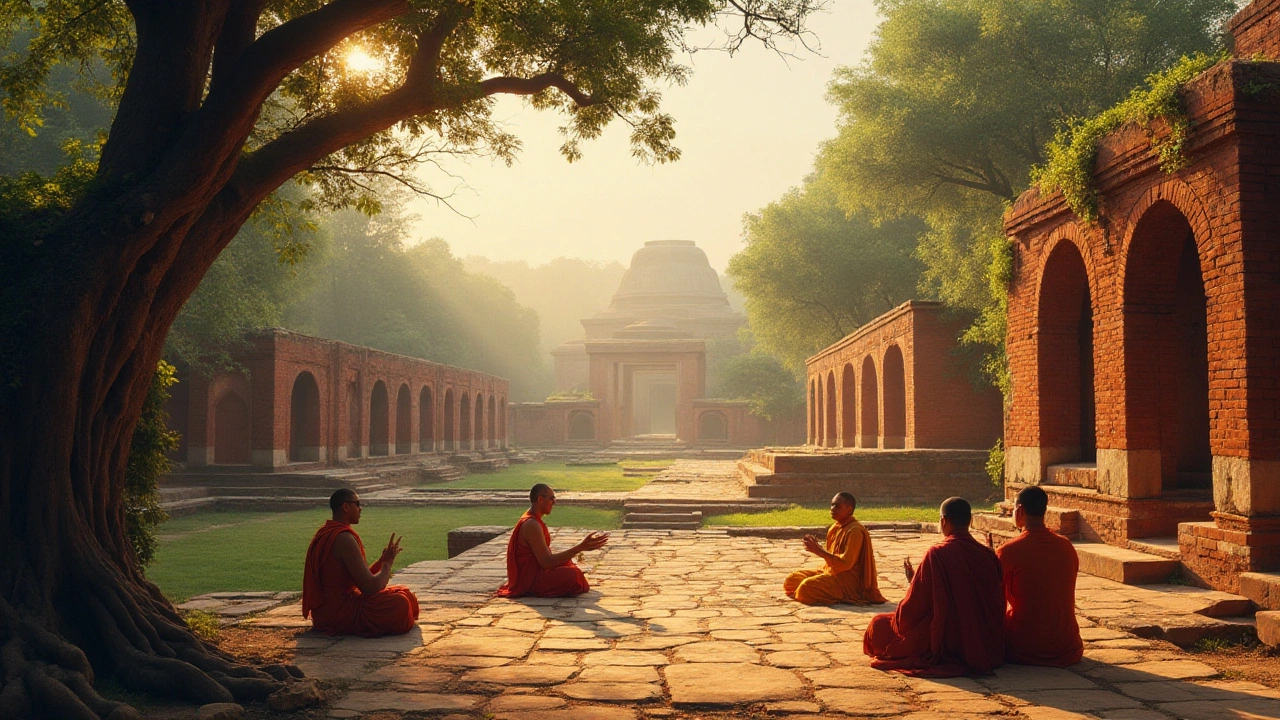
The Splendor of Ancient Sites
India, with its sprawling geographical boundaries, is adorned with ancient sites that are not only magnificent in their standing but also in the stories they tell. As you wander through the corridors of history, places like the Ajanta and Ellora Caves in Maharashtra beckon with their rock-cut architecture and exquisite carvings that echo the artistic brilliance of the Buddhists, Jains, and Hindus. These caves, some of which date back to as early as the 2nd century BCE, reflect not just religious narratives but also depict a harmonious blend of cultures, pointing to the tolerant and diverse nature of an Indian society that thrived many centuries ago.
The mysteries enshrined in the ancient city of Mohenjo-Daro in the Indus Valley are equally captivating. Mohenjo-Daro, considered one of the earliest urban settlements, showcases advanced urban planning and social organization that predates many modern developments. From the sophisticated drainage systems to the Great Bath, the remnants of this site unravel a civilization way ahead of its time. An archaeological treasure, Mohenjo-Daro serves as a cornerstone in understanding early human settlements in India and the ingenuity of its people.
Heading south, the city of Hampi offers a glimpse into the splendor of the Vijayanagara Empire, once hailed as one of the richest cities in the world. The ruins here are not merely a scattering of stones but are architectural wonders, capturing the zenith of India's prowess in art and architecture. Structures such as the Virupaksha Temple and the Stone Chariot are not only testaments to the grandeur of the empire but also a celebration of artistic expression that enriches India's heritage. According to historian John Fritz, 'Hampi is one of those rare places where history seems to have paused to take a breath.'
He suggests that the unyielding majesty of this city offers more than just historical intrigue; it presents an emotional and aesthetic journey to all who visit.
A significant site not to be missed is the Nalanda University, an epicenter of ancient learning that attracted scholars from across the globe, including China, Korea, and Central Asia. Founded in the 5th century AD, Nalanda was more than just an educational institution; it was a beacon of knowledge in the ancient world. The teachings of profound scholars like Aryabhata and Nagarjuna spread from here, shaping the currents of thought and knowledge far beyond the borders of India. The university, with its vast library and formidable faculty, shaped the intellectual climate of the time, leaving an indelible mark on the annals of history.
And then there's the story of Sanchi, nestled in the heart of India, bearing witness to the evolution of Buddhist art and architecture. The Great Stupa at Sanchi, replete with intricate carvings and gateways, celebrates the life and teachings of Buddha. Its construction was commissioned by Emperor Ashoka in the 3rd century BCE, representing an era where spiritual enlightenment and architectural innovation went hand in hand. Visitors today are not just engaging with a historical artifact but are immersing themselves in a spiritual journey that has attracted pilgrims and travelers for centuries.
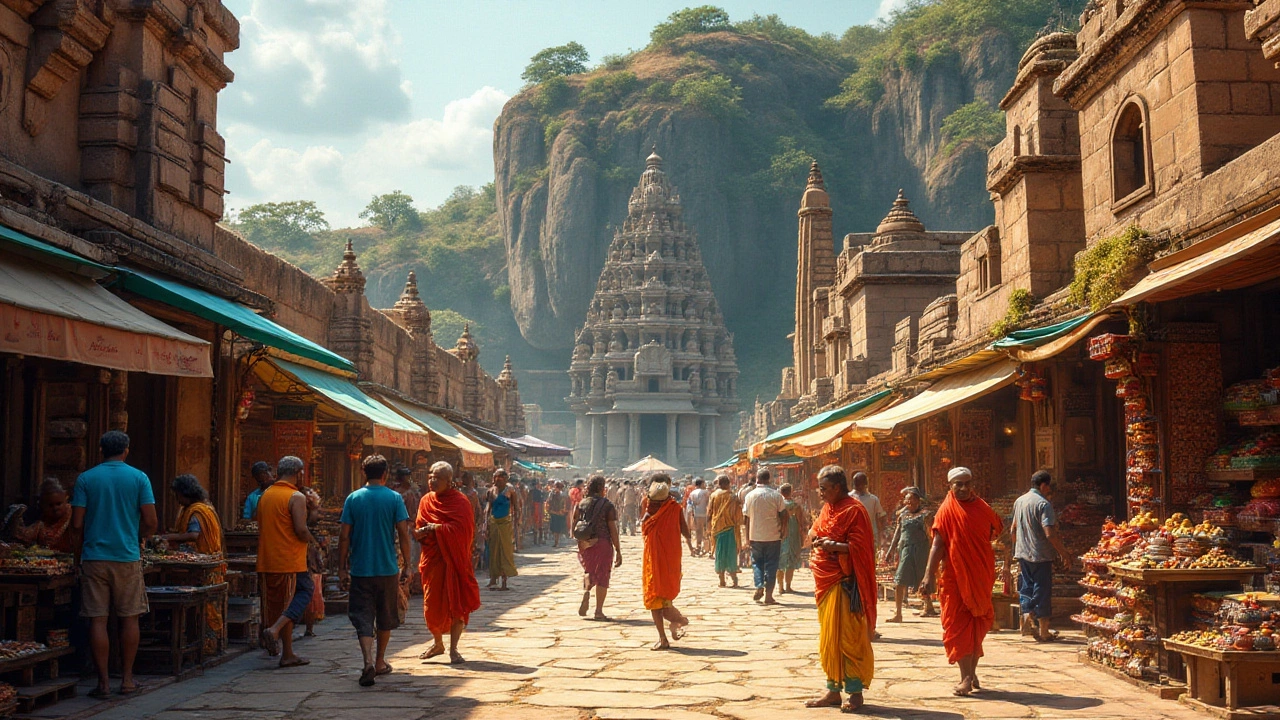
Stories Behind the Ruins
India’s ancient sites are more than just stones and scenic views; they are rich tapestries woven with intricate stories of empires, scholars, and common folks whose lives were deeply intertwined with these awe-inspiring structures. Picture the majestic ruins of Hampi, where once the mighty Vijayanagara Empire flourished in southern India. This sprawling complex, with its grandiose halls and bustling markets, thrummed with life centuries ago. Imagine the sounds of chariots clattering down stone-paved streets, the chatter of traders bargaining over spices, and the murmur of priests chanting in sacred temples. The architectural genius of Hampi speaks volumes of a time when art and spirituality were deeply embedded in the fabric of society. The stones of these ruins silently narrate stories of prosperity, trade, and culture, leaving beholders in awe of the monumental achievements of those times.
The ancient Nalanda University, another jewel among India’s heritage sites, was a sanctuary for knowledge seekers from around the world. Founded in the 5th century AD, Nalanda was more than just an educational institution; it was a melting pot of cultures and ideas, fostering intellectual growth and spiritual enlightenment. Scholars from far and wide gathered here, engaging in thought-provoking debates and paving the way for scientific and philosophical advancements. The well-preserved ruins of Nalanda’s monastic complexes offer a fascinating glimpse into the lives of its residents. A serene walk through its corridors hints at the intellectual fervor that once enveloped this ancient seat of learning. One can almost hear whispers of wisdom and see visions of students engrossed in sacred texts. Nalanda's story emphasizes the importance of communal knowledge and spiritual harmony.
Amid these captivating tales, the Ajanta and Ellora Caves stand testament to the artistic prowess and religious devotion that pervaded ancient India. Carved meticulously into rock faces, these caves are adorned with resplendent murals and intricate sculptures that narrate stories from Buddhist, Hindu, and Jain mythologies. As you step into these caves, each painting and carving encapsulates the essence of devotional fervor and artistic genius that flourished during the period. Witnessing these artistic masterpieces is akin to flipping through a visual anthology of India's splendid past. Art historians and archaeologists have long marveled at the perfection and precision evident in these works, suggesting an advanced understanding of artistic techniques by their creators.
“The Ajanta paintings of India are one of the greatest glories not merely of Gupta art but of the art of the world,” said eminent art historian Ananda Coomaraswamy, capturing the admiration these artworks rightfully command.
Yet, these sites are not frozen relics; they resonate with a timeless vitality, captivating the imagination of those who wander through them. The stories behind these ancient sites in India offer a vivid lens through which one can explore a history rich with innovation, spirituality, and remarkable achievements. Let's ensure these tales live on, echoing through time to inspire future generations to explore their cultural ancestry with awe and respect.
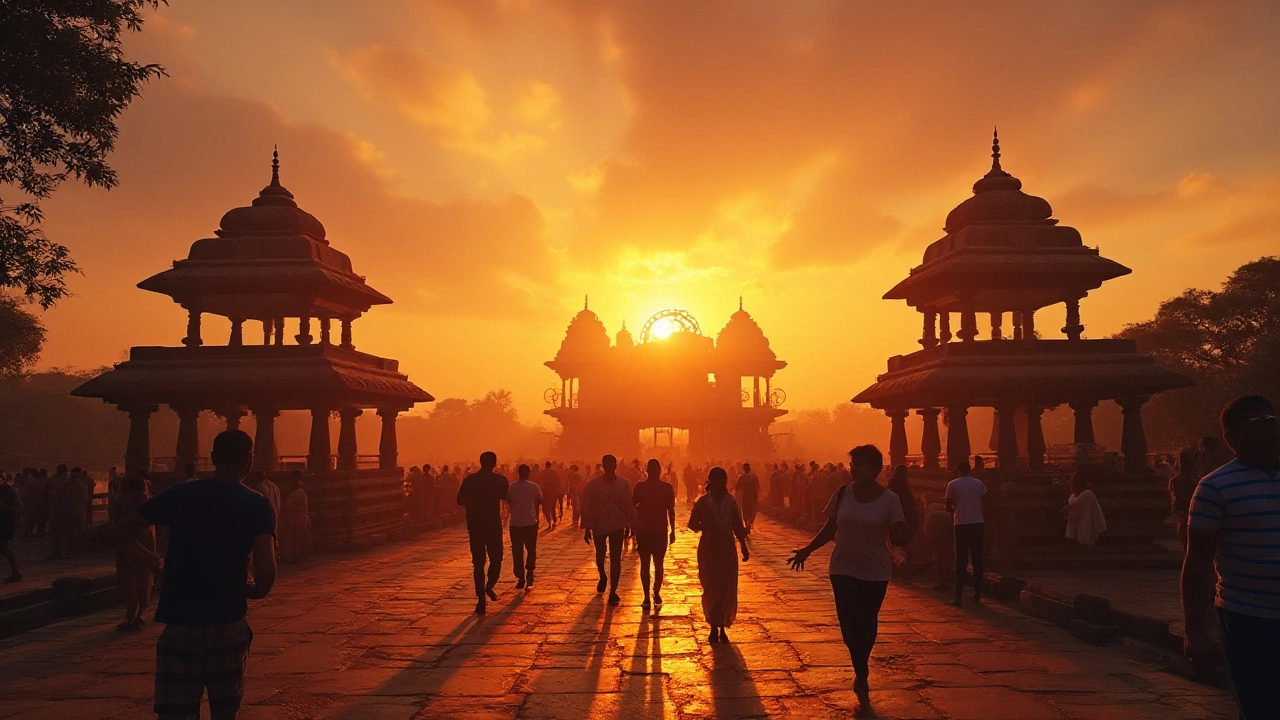
Preserving the Past for the Future
Across India's sprawling landscape, numerous ancient sites stand tall, weathering time and nature's forces. Preserving these invaluable elements of the past poses profound challenges and opportunities. Recognizing their immense cultural and historical value, India and various global organizations strive tirelessly to ensure their longevity for future generations. The endeavor to protect these jewels of our shared human legacy requires not just craftsmanship but an understanding of the evolving contemporary world.
The preservation process begins with rigorous documentation, capturing minute details of these ancient sites. Such documentation acts as a roadmap for restoration projects, which ensure that any intervention respects the original architecture and design philosophy. This often involves traditional artisans skilled in ancient techniques, whose craft breathes new life into crumbling structures. In many cases, organizations like the Archaeological Survey of India (ASI) partner with experts who have a grasp on historical nuances, cementing efforts with authenticity.
Modern Tools for Timeless Structures
Advancements in technology have propelled conservation efforts to unprecedented levels. 3D scanning and digital reconstructions open avenues to analyze site degradation, plan meticulous restorations, and conduct virtual tours, echoing history in the digital world. Such tools even help simulate conditions that age these structures, aiding professionals to counteract these factors effectively. As the world ventures deeper into the digital age, these technological strides democratize access to humanity's antiquities, offering glimpses of cultural history from any corner of the globe.
Community: Guardians of Heritage
While technical expertise plays its part, community engagement forms the bedrock of preservation efforts. Meaningful collaborations with local communities transform them into passionate custodians of heritage. Educational outreach imbues local residents with pride in their heritage, fostering a sense of ownership that translates into vigilant protection of their treasures. As guardians of the country's heritage, they are pivotal in nurturing these relics, ensuring their tales continue to be told.
"Preservation of our history is not merely an academic exercise. It is a responsibility to past, present, and future generations," states renowned historian Dr. Rajan Mehta.
To better illustrate the importance of balanced preservation, here's a display showing the partnerships and their respective projects:
| Partnership | Project |
|---|---|
| Archaeological Survey of India & UNESCO | Rock Shelters of Bhimbetka |
| INTACH & Local Artisans | Hampi Temples Restoration |
It's vital to understand that these measures aren't purely protective. They invigorate local economies, draw scholars, promote tourism, and, perhaps most importantly, foster a profound global cultural dialogue. As we look ahead, the preservation of India’s profound heritage beckons us to harmonize tradition with technology, fostering an environment where past grandeur enriches present understanding and inspires the future.
